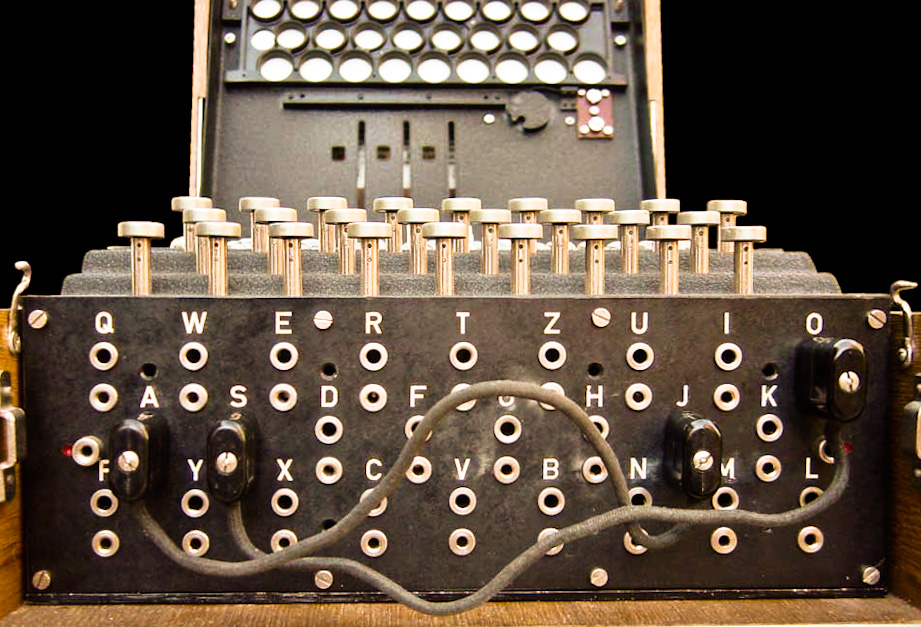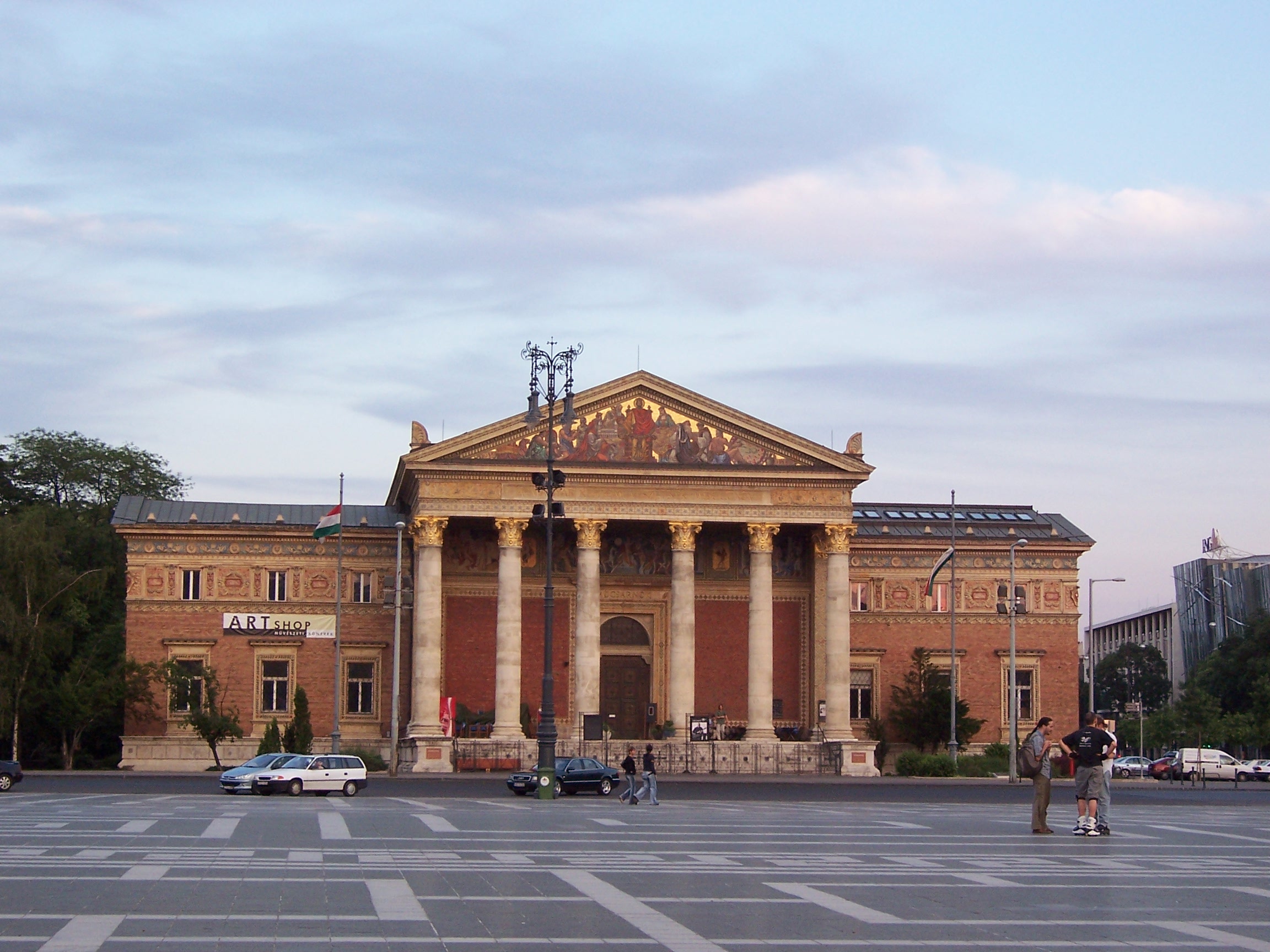|
Géza Udvary
Géza László Udvary (20 September 1872, Perbenyik - 4 February 1932, Budapest) was a Hungarian painter in the Romantic style. Biography He attended the public schools of Kassa and Debrecen, then studied painting at a private school operated by Bertalan Karlovszky.Magyar Katolikus Lexikon Brief biography. Later, he enrolled at the "School of Decorative Arts" in Budapest. He also pursued his studies, briefly, in Vienna, Munich, Paris and several places in Italy. At first, he concentrated on landscapes and portraits, but then turned to paintings of figures in the Renaissance style, for which he is best-known. After returning home, he spent seven years studying |
Pribeník
Pribeník () is a village and municipality in the Trebišov District in the Košice Region of south-eastern Slovakia. History In historical records the village was first mentioned in 1323. Geography The village lies at an altitude of 100 metres and covers an area of 12.331 km2. It has a population of about 960 people. Ethnicity The village is about 80% Hungarian and 20% Slovak. Facilities The village has a public library A library is a collection of Book, books, and possibly other Document, materials and Media (communication), media, that is accessible for use by its members and members of allied institutions. Libraries provide physical (hard copies) or electron ... and a football pitch. References External links *http://www.soupopribenik.edu.sk/ Villages and municipalities in Trebišov District {{Trebišov-geo-stub ... [...More Info...] [...Related Items...] OR: [Wikipedia] [Google] [Baidu] |
Fresco
Fresco ( or frescoes) is a technique of mural painting executed upon freshly laid ("wet") lime plaster. Water is used as the vehicle for the dry-powder pigment to merge with the plaster, and with the setting of the plaster, the painting becomes an integral part of the wall. The word ''fresco'' () is derived from the Italian adjective ''fresco'' meaning "fresh", and may thus be contrasted with fresco-secco or secco mural painting techniques, which are applied to dried plaster, to supplement painting in fresco. The fresco technique has been employed since antiquity and is closely associated with Italian Renaissance painting. The word ''fresco'' is commonly and inaccurately used in English to refer to any wall painting regardless of the plaster technology or binding medium. This, in part, contributes to a misconception that the most geographically and temporally common wall painting technology was the painting into wet lime plaster. Even in apparently '' buon fresco'' technology ... [...More Info...] [...Related Items...] OR: [Wikipedia] [Google] [Baidu] |
Hungarian Male Painters
Hungarian may refer to: * Hungary, a country in Central Europe * Kingdom of Hungary, state of Hungary, existing between 1000 and 1946 * Hungarians/Magyars, ethnic groups in Hungary * Hungarian algorithm, a polynomial time algorithm for solving the assignment problem * Hungarian language, a Uralic language spoken in Hungary and all neighbouring countries * Hungarian notation, a naming convention in computer programming * Hungarian cuisine Hungarian or Magyar cuisine (Hungarian language, Hungarian: ''Magyar konyha'') is the cuisine characteristic of the nation of Hungary, and its primary ethnic group, the Hungarians, Magyars. Hungarian cuisine has been described as being the P ..., the cuisine of Hungary and the Hungarians See also * * {{disambiguation Language and nationality disambiguation pages ... [...More Info...] [...Related Items...] OR: [Wikipedia] [Google] [Baidu] |
1932 Deaths
Events January * January 4 – The British authorities in India arrest and intern Mahatma Gandhi and Vallabhbhai Patel. * January 9 – Sakuradamon Incident (1932), Sakuradamon Incident: Korean nationalist Lee Bong-chang fails in his effort to assassinate Emperor Hirohito of Japan. The Kuomintang's official newspaper runs an editorial expressing regret that the attempt failed, which is used by the Japanese as a pretext to attack Shanghai later in the month. * January 22 – The 1932 Salvadoran peasant uprising begins; it is suppressed by the government of Maximiliano Hernández Martínez. * January 24 – Marshal Pietro Badoglio declares the end of Libyan resistance. * January 26 – British submarine aircraft carrier sinks with the loss of all 60 onboard on exercise in Lyme Bay in the English Channel. * January 28 – January 28 incident: Conflict between Japan and China in Shanghai. * January 31 – Japanese warships arrive in Nanking. February * February 2 ** A general ... [...More Info...] [...Related Items...] OR: [Wikipedia] [Google] [Baidu] |
1872 Births
Events January * January 12 – Yohannes IV is crowned Emperor of Ethiopian Empire, Ethiopia in Axum, the first ruler crowned in that city in over 500 years. *January 20 – The Cavite mutiny was an uprising of Filipino military personnel of Fort San Felipe (Cavite), Fort San Felipe, the Spanish arsenal in Cavite, Philippine Islands.Foreman, J., 1906, The set course for her patrol area off the northeastern coast of the main Japanese island Honshū. She arrived, New York: Charles Scribner's Sons February * February 2 – The government of the United Kingdom buys a number of forts on the Gold Coast (region), Gold Coast, from the Netherlands. * February 4 – A great solar flare, and associated geomagnetic storm, makes northern lights visible as far south as Cuba. * February 13 – Rex parade, Rex, the most famous parade on Mardi Gras, parades for the first time in New Orleans for Grand Duke Alexei Alexandrovich of Russia. * February 17 – Filipino peo ... [...More Info...] [...Related Items...] OR: [Wikipedia] [Google] [Baidu] |
Kunsthalle Budapest
The Budapest Hall of Art or Palace of Art, ( Hungarian − ''Műcsarnok Kunsthalle''), is a contemporary art museum and a historic building located in Budapest, Hungary. Description The museum building is on Heroes' Square, facing the Budapest Museum of Fine Arts. The art museum hosts temporary exhibits contemporary art. It operates on the program of German Kunsthalles, as an institution run by artists that does not maintain its own collection. It is an Institution of the Hungarian Academy of Arts. Its government partner is the Ministry of Education and Culture. It has a bookshop, library, and the Műcsarnok Café that overlooks the square. Building The large Neoclassical style structure, designed by architects Albert Schickedanz and Fülöp Herczog, was completed in 1896. It was originally built for millennium celebrations. Its portico is in the Greek Revival style. The three-bayed, semi-circular apse houses a roofed exhibition hall with skylight A skylig ... [...More Info...] [...Related Items...] OR: [Wikipedia] [Google] [Baidu] |
Hungarian Parliament Building
The Hungarian Parliament Building ( , ), also known as the Parliament of Budapest after its location, is the seat of the National Assembly of Hungary, a notable landmark of Hungary, and a popular tourist destination in Budapest. It is situated on Kossuth tér, Kossuth Square in the Pest, Hungary, Pest side of the city, on the eastern bank of the Danube. It was designed by Hungarian architect Imre Steindl in Gothic Revival architecture, neo-Gothic style and opened in 1902. It has been the largest building in Hungary since its completion. The architectural style of the Hungarian parliament building was influenced by the gothic Vienna City Hall, and the renaissance elements like the cupola was influenced by the in Vienna. History Budapest was united from three cities in 1873, namely Buda, Óbuda, and Pest, Hungary, Pest. Seven years later, the Diet of Hungary, Diet resolved to establish a new, representative parliament building, expressing the sovereignty of the nation. The buil ... [...More Info...] [...Related Items...] OR: [Wikipedia] [Google] [Baidu] |
Károly Lotz
Lotz Károly Antal Pál, or Karl Anton Paul Lotz (16 December 1833 – 13 October 1904) was a Germans, German-Hungarian people, Hungarian Painting, painter. Career Karl Lotz was born in Bad Homburg vor der Taunus, Höhe, Germany, the 7th and youngest surviving child of Wilhelm Christian Lotz and Antonia Höfflick (Höfflich). His father was a valet of Prince Gustav zu Hesse-Homburg, Hessen-Homburg at the time when the prince was representing Austria at the Congress of Vienna, which among other matters dealt with the House of Hessen-Homburg's rights of sovereignty over Hessen-Darmstadt. The sudden death of the young Baron von Sinclair, chargé d'affaires, forced W. C. Lotz temporarily into the rôle. While in Hungary in 1815 he made the acquaintance of the 13-year-old Antonie Hoefflich, whom he married three years later. She gave birth to 8 children, of whom Karl was the youngest. W. C. Lotz died in 1837 and Antonie moved the family to Pest, Hungary, Pest (now one of the thre ... [...More Info...] [...Related Items...] OR: [Wikipedia] [Google] [Baidu] |
Renaissance Art
Renaissance art (1350 – 1620) is the painting, sculpture, and decorative arts of the period of European history known as the Renaissance, which emerged as a distinct style in Italy in about AD 1400, in parallel with developments which occurred in philosophy, literature, music, science, and technology. Renaissance art took as its foundation the art of Classical antiquity, perceived as the noblest of ancient traditions, but transformed that tradition by absorbing recent developments in the art of Northern Europe and by applying contemporary scientific knowledge. Along with Renaissance humanist philosophy, it spread throughout Europe, affecting both artists and their patrons with the development of new techniques and new artistic sensibilities. For art historians, Renaissance art marks the transition of Europe from the medieval period to the Early Modern age. The body of art, including painting, sculpture, architecture, music and literature identified as "Renaissance art" was ... [...More Info...] [...Related Items...] OR: [Wikipedia] [Google] [Baidu] |
Kingdom Of Hungary
The Kingdom of Hungary was a monarchy in Central Europe that existed for nearly a millennium, from 1000 to 1946 and was a key part of the Habsburg monarchy from 1526-1918. The Principality of Hungary emerged as a Christian kingdom upon the Coronation of the Hungarian monarch, coronation of the first king Stephen I of Hungary, Stephen I at Esztergom around the year 1000;Kristó Gyula – Barta János – Gergely Jenő: Magyarország története előidőktől 2000-ig (History of Hungary from the prehistory to 2000), Pannonica Kiadó, Budapest, 2002, , pp. 37, 113, 678 ("Magyarország a 12. század második felére jelentős európai tényezővé, középhatalommá vált."/"By the 12th century Hungary became an important European factor, became a middle power.", "A Nyugat részévé vált Magyarország.../Hungary became part of the West"), pp. 616–644 his family (the Árpád dynasty) led the monarchy for 300 years. By the 12th century, the kingdom became a European power. Du ... [...More Info...] [...Related Items...] OR: [Wikipedia] [Google] [Baidu] |
Bertalan Karlovszky
Bertalan Karlovszky (24 October 1858, Munkács – 11 April 1938, Budapest) was a Hungarian painter. Biography His parents moved to Budapest when he very young and he attended the public schools there. Showing no interest in a higher education, he was enrolled at a Military Academy. However, he spent most of his time in class making drawings of his instructors and fellow students, rather than listening to the lectures. Soon, he was the talk of the school and painted a portrait of his commanding officer from a photograph. The officer was so impressed that he spoke to Bertalan's mother and suggested that he be given artistic training.Encyclopedia Search : Biography @ A Pallas nagy lexikona< ... [...More Info...] [...Related Items...] OR: [Wikipedia] [Google] [Baidu] |







